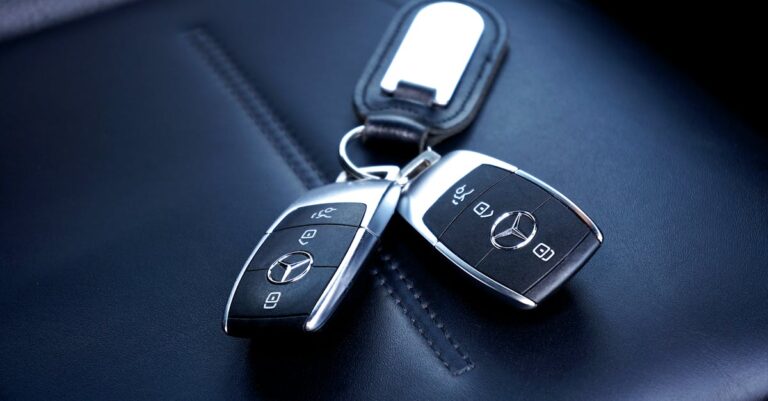Table Of Contents
- Avoid These Common Car Buying Mistakes: Your Ultimate Guide
- Why Car Buying Can Be So Tricky (And Exciting!)
- Mistake #1: Skipping Your Homework – The Research Phase is Crucial
- Mistake #2: Falling in Love at First Sight – The Emotional Trap
- Mistake #3: Botching the Budget – It’s More Than Just the Sticker Price
- Mistake #4: The Test Drive Fumble – Not Just a Joyride
- Mistake #5: Skipping the Mechanic (Especially for Used Cars!)
- Mistake #6: Focusing Only on the Monthly Payment
- Mistake #7: Getting Tripped Up by Trade Ins
- Mistake #8: Letting the Dealership Dictate Financing
- Mistake #9: Rushing the Paperwork – Read the Fine Print!
- Mistake #10: Saying Yes to Unnecessary Extras
- Conclusion: Drive Away Happy – Smart Car Buying is Possible
- Frequently Asked Questions (FAQs)
Avoid These Common Car Buying Mistakes: Your Ultimate Guide
So, you’re thinking about buying a car? Awesome! It’s a big step, whether it’s your first set of wheels or an upgrade to accommodate a growing family or a new lifestyle. But let’s be honest, navigating the car buying process can feel like walking through a minefield blindfolded. There are shiny objects (hello, new car smell!), confusing numbers, and salespeople who seem to speak a different language. It’s exciting, sure, but it’s also incredibly easy to make a misstep that costs you time, money, and a whole lot of sanity.
Fear not, intrepid car shopper! You don’t have to go into this unprepared. Think of this guide as your trusty map and compass, helping you navigate the tricky terrain and steer clear of the most common pitfalls. We’re going to break down the process, expose the frequent mistakes, and arm you with the knowledge you need to drive away confident and happy with your purchase. Ready to become a car buying ninja? Let’s dive in!
Why Car Buying Can Be So Tricky (And Exciting!)
Buying a car is often the second biggest purchase most people make, right after a house. That alone ramps up the pressure! It’s not just about picking a color you like; it’s a complex transaction involving significant financial commitment, long term implications, and a whole lot of moving parts. Dealerships are businesses designed to make a profit, and while many are reputable, the process itself can feel overwhelming. You’re dealing with sticker prices, financing options, trade ins, potential add ons, insurance, registration… it’s a lot to juggle!
Add to that the emotional element. Cars aren’t just transportation; they can be symbols of freedom, status, or adventure. It’s easy to get swept up in the excitement of a sleek design or powerful engine and let your heart rule your head (and your wallet). This emotional pull, combined with the financial complexity, creates the perfect storm for potential mistakes. But knowing where the traps lie is the first step to avoiding them. Understanding the process empowers you to take control and make informed decisions, turning a potentially stressful experience into a successful one.
Mistake #1: Skipping Your Homework – The Research Phase is Crucial
You wouldn’t buy a house without researching the neighborhood, checking the foundations, and comparing prices, right? So why would you walk onto a car lot without doing your due diligence? Skipping the research phase is perhaps the single biggest mistake you can make. It’s like going into battle without knowing your enemy… or in this case, without knowing what car truly fits your life and budget.
Not Defining Your Needs vs. Wants
Okay, let’s get real. That sporty convertible looks amazing, but do you really need it for your daily commute hauling kids and groceries? Before you even *think* about specific models, grab a piece of paper (or open a notes app) and list what you absolutely need in a vehicle. Consider:
- Passengers: How many people do you regularly transport?
- Cargo: Do you need space for sports equipment, luggage, pets, work tools?
- Commute: How far do you drive daily? Is fuel efficiency a major factor?
- Driving Conditions: Will you face snow, rough roads, or mostly city driving? Do you need all wheel drive?
- Parking: Is parallel parking a daily nightmare? Maybe that giant SUV isn’t ideal.
- Safety Features: Are features like blind spot monitoring or automatic emergency braking important to you?
Once you have your needs list, then you can think about your wants – the sunroof, the premium sound system, the fancy wheels. Separating these helps you prioritize and prevents you from being swayed by features you don’t actually require, which inevitably drive up the cost.
Ignoring Reliability Ratings and Ownership Costs
A car’s sticker price is just the beginning of the story. Some vehicles might seem like a bargain upfront but end up costing a fortune in repairs, maintenance, fuel, and insurance down the road. This is where reliability ratings and total cost of ownership (TCO) estimates come in. Failing to research these can lead to serious buyer’s remorse.
Look up consumer reports, J.D. Power ratings, and online forums dedicated to specific makes and models. See what current owners are saying. Are there common problems? Are parts expensive? How does it hold its value (resale value)? What’s the estimated annual fuel cost? How does it stack up insurance wise? A slightly more expensive car with a stellar reliability record and lower running costs might be a much smarter financial decision in the long run.
Where to Find Reliable Car Information
The internet is your best friend here, but stick to reputable sources:
- Consumer Reports: Offers unbiased reviews, reliability data, and safety ratings (often requires a subscription, but usually worth it).
- NHTSA (National Highway Traffic Safety Administration) & IIHS (Insurance Institute for Highway Safety): Provide crucial safety ratings and crash test results.
- Edmunds & Kelley Blue Book (KBB): Great for pricing information (MSRP, invoice price, market value), TCO estimates, and reviews.
- FuelEconomy.gov: Official government source for fuel efficiency ratings.
- Owner Forums & Online Communities: Can provide real world insights into specific models, but take individual anecdotes with a grain of salt. Look for recurring themes.
Spend time comparing models that fit your needs list. Get familiar with trim levels, standard features, and optional packages. The more you know before you step onto the lot, the stronger your negotiating position will be.
Mistake #2: Falling in Love at First Sight – The Emotional Trap
Ah, the allure of the new. You walk onto the lot, the sun glints off the perfect paint job, you smell that intoxicating new car scent, and suddenly, you *must* have THAT car. Salespeople are masters at leveraging this emotional connection. They know that if they can get you to fall in love, you’re more likely to overlook flaws, skip crucial steps, and agree to a less than favorable deal.
Remember your research? Remember your needs list? Stick to them! It’s okay to appreciate a beautiful car, but treat the initial visit like a fact finding mission, not a romantic encounter. Be prepared to walk away. Seriously. Knowing you have other options and that you don’t *need* this specific car today gives you immense power. Don’t let the salesperson rush you or pressure you with “limited time offers.” There will always be another car, another deal. Keep your emotions in check and focus on making a logical, informed decision.
Mistake #3: Botching the Budget – It’s More Than Just the Sticker Price
Thinking you can afford a car based solely on its Manufacturer’s Suggested Retail Price (MSRP) is a classic blunder. The true cost of owning a vehicle extends far beyond the number on the window sticker. If you don’t account for all the associated expenses, you could find yourself financially strained very quickly.
Forgetting the “Hidden” Costs
What else should be in your budget? Let’s break it down:
- Taxes and Fees: Sales tax, documentation fees (doc fees), registration fees, title fees – these can add thousands to the final price. Doc fees, in particular, can vary wildly and are sometimes negotiable.
- Insurance: Get insurance quotes for the specific models you’re considering before you buy. Premiums can differ significantly based on the car’s value, safety features, repair costs, and even theft rates.
- Fuel: Estimate your annual fuel costs based on the car’s MPG rating and your average mileage.
- Maintenance and Repairs: Factor in routine maintenance (oil changes, tire rotations) and potential unexpected repairs, especially if buying a used car or one with a less than stellar reliability record.
- Financing Costs (Interest): If you’re taking out a loan, the interest paid over the life of the loan is a major expense.
Add all these up to get a realistic picture of the total cost of ownership. Use online calculators (like those on Edmunds or KBB) to help estimate these figures.
Getting Pre-Approved for Financing: Your Secret Weapon
Walking into a dealership without knowing how you’ll pay is like handing them a blank check. One of the smartest moves you can make is to secure financing before you start shopping. Approach your bank, credit union, or online lenders and get pre-approved for a car loan.
Why is this so powerful?
- Know Your Budget: You’ll know exactly how much you can borrow and what your interest rate will be, setting a firm ceiling for your spending.
- Stronger Negotiating Position: You become a “cash buyer” in the dealership’s eyes, separating the car price negotiation from the financing negotiation.
- Benchmark Rate: You have a specific loan offer (interest rate, term) to compare against any financing the dealership offers. They might be able to beat your pre-approved rate, but if not, you’re already covered.
Don’t skip this step! It takes a little extra effort upfront but can save you significant money and stress.
Mistake #4: The Test Drive Fumble – Not Just a Joyride
The test drive isn’t just about seeing if the stereo sounds good or if the seats are comfy (though those things matter!). It’s your primary opportunity to assess how the car actually performs and whether it truly fits your driving style and needs. A quick spin around the block on the salesperson’s predetermined route simply isn’t enough.
What to Really Look For During a Test Drive
Insist on driving the car on routes similar to your daily commute – include highways, city streets, and maybe even some hills if applicable. Turn off the radio and listen carefully. Pay attention to:
- Acceleration and Braking: Does it merge smoothly onto the highway? Do the brakes feel responsive and strong, or mushy?
- Handling and Steering: How does it feel around corners? Is the steering too loose or too tight? Does it drift to one side?
- Engine and Transmission Noise: Listen for any unusual sounds, clunks, or whining. Does the transmission shift smoothly?
- Suspension: Drive over some bumps (safely!). How does the car absorb them? Are there any rattles or clunks?
- Visibility: Check your blind spots. Can you see clearly out of all windows and mirrors?
- Comfort: Adjust the seat, steering wheel, and mirrors. Can you find a comfortable driving position? Are the controls easy to reach and intuitive?
- Features: Test out the features that are important to you – infotainment system, climate control, wipers, lights.
- Parking: Try parking it! Does it fit easily into spaces? Is visibility adequate for maneuvering?
Don’t feel rushed. Take at least 20-30 minutes. If possible, test drive multiple vehicles (even different trim levels of the same model) back to back for comparison. This is your chance to catch potential issues before you sign on the dotted line.
Mistake #5: Skipping the Mechanic (Especially for Used Cars!)
This one is primarily for used car buyers, but it’s absolutely critical. You might kick the tires and check under the hood, but unless you’re a certified mechanic, you likely won’t spot hidden problems. That “great deal” could quickly turn into a money pit if the car has underlying mechanical issues.
Before you agree to buy any used car (even a certified pre owned one, for extra peace of mind), make the sale contingent on a pre purchase inspection (PPI) by an independent mechanic of your choosing. Yes, it will cost you maybe $100 $200, but it’s potentially the best money you’ll spend in the entire process. A good mechanic will put the car up on a lift and check everything: engine, transmission, brakes, suspension, frame damage, fluid leaks, computer diagnostics, and more.
They’ll give you an unbiased report on the car’s condition and alert you to any necessary immediate repairs or potential future problems. This information is invaluable. It can help you negotiate a lower price to cover needed repairs, confirm you’re getting a solid vehicle, or give you the confidence to walk away from a bad deal. Never let the seller (dealer or private party) choose the mechanic or talk you out of getting an inspection.
Mistake #6: Focusing Only on the Monthly Payment
“We can get you into this car for just $X per month!” It sounds tempting, doesn’t it? Dealerships love to focus on the monthly payment because it makes even expensive cars seem affordable. However, this is often a distraction technique.
A low monthly payment can easily be achieved by extending the loan term (sometimes out to 72, 84, or even 96 months!). While this lowers the payment, you end up paying significantly more in interest over the life of the loan. You could also find yourself “upside down” or having negative equity for longer, meaning you owe more on the car than it’s actually worth. This becomes a problem if you need to sell or trade in the car early or if it’s totaled in an accident.
Always negotiate the total purchase price of the car first. Once you’ve agreed on the price, then discuss financing terms (loan length, interest rate) and your down payment to determine the monthly payment. Don’t let the salesperson work backward from a payment amount. Stick to negotiating the price of the car itself, separate from financing and your trade in.
Mistake #7: Getting Tripped Up by Trade Ins
Trading in your old car can seem convenient, bundling everything into one transaction at the dealership. However, it adds another layer of complexity and another opportunity for you to potentially lose money if you’re not careful.
Dealerships often try to lump the trade in value, the new car price, and financing into one confusing negotiation. They might offer you a seemingly great price for your trade in, only to inflate the price of the new car or give you a worse financing rate to make up for it. It’s a shell game.
To avoid this:
- Know Your Trade In’s Value: Before visiting the dealership, research your car’s trade in value using online resources like KBB, Edmunds, and NADA Guides. Get quotes from multiple sources, including online car buyers like CarMax or Carvana, to establish a baseline.
- Negotiate Separately: Treat the trade in as a completely separate transaction from the purchase of the new car. First, agree on the price of the car you’re buying. Only *then* should you discuss the trade in. If the dealership’s offer is significantly lower than your research suggests, be prepared to sell your old car privately or to one of the online buyers. You’ll almost always get more money selling privately, although it requires more effort.
Don’t let the convenience of a trade in cost you hundreds or even thousands of dollars.
Mistake #8: Letting the Dealership Dictate Financing
We touched on this earlier with pre approval, but it bears repeating. Dealerships make a significant portion of their profit through their Finance & Insurance (F&I) office. They often have relationships with multiple lenders and can sometimes offer competitive rates. However, they might also mark up the interest rate offered by the bank (this is called rate spread) to make extra profit.
If you haven’t secured pre approval, you have no leverage and no benchmark to compare their offer against. You might end up paying a much higher interest rate than you qualify for. Even if you *are* pre approved, always let the dealership make you a financing offer. See if they can beat the terms you secured from your bank or credit union. If they can offer a lower Annual Percentage Rate (APR) for the same loan term, great! But if your pre approved offer is better, stick with it. Having that pre approval in your back pocket ensures you get a fair deal, whether it’s from your lender or theirs.
Mistake #9: Rushing the Paperwork – Read the Fine Print!
You’ve negotiated the price, agreed on financing, maybe even settled the trade in. You’re exhausted, excited, and just want to get the keys and drive away. This is exactly when the F&I manager might try to rush you through signing a mountain of paperwork. Don’t let them!
This final stage is crucial. Read every single document carefully before you sign it. Verify that all the numbers match what you agreed upon: the final vehicle price, trade in allowance, down payment, loan amount, interest rate (APR), and loan term. Check for any added fees or services you didn’t agree to (we’ll cover those next).
If you see discrepancies or don’t understand something, ask for clarification. Don’t be intimidated or feel pressured to sign quickly. It’s your money and your contract. Ensure everything is accurate and exactly as negotiated. If you need to, take the paperwork home to review it before signing (though dealerships may resist this). A few extra minutes of careful reading can prevent costly errors or unwanted additions.
Mistake #10: Saying Yes to Unnecessary Extras
The F&I office is also where you’ll likely face a hard sell for various add ons and services. These can include:
- Extended Warranties: While sometimes beneficial, especially for cars with questionable reliability, dealership warranties are often overpriced. You can usually buy similar coverage from third parties or even your credit union for less. Carefully consider if you need it and shop around.
- GAP Insurance (Guaranteed Asset Protection): Covers the difference between what your insurance pays out and what you still owe on the loan if the car is totaled. Useful if you have a long loan term or small down payment, but often cheaper through your auto insurer.
- VIN Etching: Etching the Vehicle Identification Number onto the windows as a theft deterrent. You can often do this yourself with a kit for much less.
- Fabric Protection/Paint Sealant: Usually expensive treatments offering minimal benefit beyond what regular washing and waxing provide.
- Nitrogen in Tires: Often touted for better pressure retention, but the benefits for typical drivers are negligible compared to regular air checks.
- Credit Life Insurance: Pays off your car loan if you die. Usually expensive and often unnecessary if you have adequate life insurance already.
The F&I manager is trained to sell these high profit items. Be polite but firm. Ask yourself if you truly need the product and if the price is reasonable. Research these items beforehand if possible. It’s almost always okay to just say “no, thank you.” Don’t let pressure tactics push you into buying extras that inflate your final cost unnecessarily.
Conclusion: Drive Away Happy – Smart Car Buying is Possible
Whew! That might seem like a lot to remember, but avoiding these common car buying mistakes boils down to a few key principles: preparation, patience, and staying in control. Do your research upfront – know your needs, understand the costs, and get pre approved for financing. Take your time during the process – don’t fall in love too quickly, conduct a thorough test drive, and get a mechanical inspection for used cars. Stay assertive during negotiations – focus on the total price, treat the trade in separately, and carefully review all paperwork before signing.
Buying a car can be an exciting and rewarding experience. By being aware of the potential pitfalls and arming yourself with knowledge, you shift the power dynamic. You’re no longer just a customer being sold to; you’re an informed buyer making a smart financial decision. So, take a deep breath, follow these guidelines, and get ready to confidently navigate the car buying journey and drive away in a vehicle you love, at a price you can afford. Happy (and smart) car hunting!
Frequently Asked Questions (FAQs)
FAQ 1: Is it better to buy new or used?
A: There’s no single right answer; it depends on your budget, priorities, and tolerance for potential repairs. New cars offer the latest features, full warranties, and that ‘new car’ feeling, but they depreciate much faster and cost more upfront. Used cars are significantly cheaper initially and depreciate slower, but may require more maintenance, might not have a warranty (or a limited one), and lack the newest tech. Consider Certified Pre Owned (CPO) vehicles as a middle ground – they’re used cars that have been inspected and come with an extended manufacturer warranty, offering some peace of mind at a lower price than new.
FAQ 2: How much should I put down on a car?
A: While you can buy a car with zero down, it’s generally recommended to put down as much as you comfortably can. A larger down payment reduces your loan amount, potentially lowers your monthly payments, decreases the total interest paid, and helps prevent you from being ‘upside down’ on your loan. Aiming for at least 10% on a used car and 20% on a new car is a common guideline to offset initial depreciation, but any amount helps improve your loan terms.
FAQ 3: Can I negotiate the price of a new car?
A: Absolutely! While some brands or dealerships experiment with ‘no haggle’ pricing, negotiation is still standard practice for most new car purchases. Research the invoice price (what the dealer paid) and the average market price for the specific model and trim you want using sites like KBB or Edmunds. This gives you a realistic target range. Start your negotiation slightly below your target price and be prepared to justify your offer based on your research. Remember to negotiate the price of the car itself, separate from financing or trade ins.
FAQ 4: What’s the best time of year to buy a car?
A: While deals can pop up anytime, certain periods are often better for buyers. The end of the month, quarter, or year can be advantageous as dealerships and salespeople try to meet sales quotas. Model year changeovers (typically late summer/early fall) can mean discounts on outgoing models as dealers make room for new inventory. Holiday sales events (like Labor Day, Memorial Day, Black Friday) also frequently feature manufacturer incentives and dealer discounts.
FAQ 5: Should I get financing from the dealership or my bank?
A: The best strategy is to get pre approved financing from your bank or credit union before you go to the dealership. This gives you a competitive interest rate offer to use as a benchmark. Once you’ve negotiated the car’s price, let the dealership’s finance manager try to beat your pre approved rate. If they can offer a lower APR for the same loan term, great! If not, you can confidently use the financing you already secured. This approach ensures you get the most competitive loan terms available to you.









